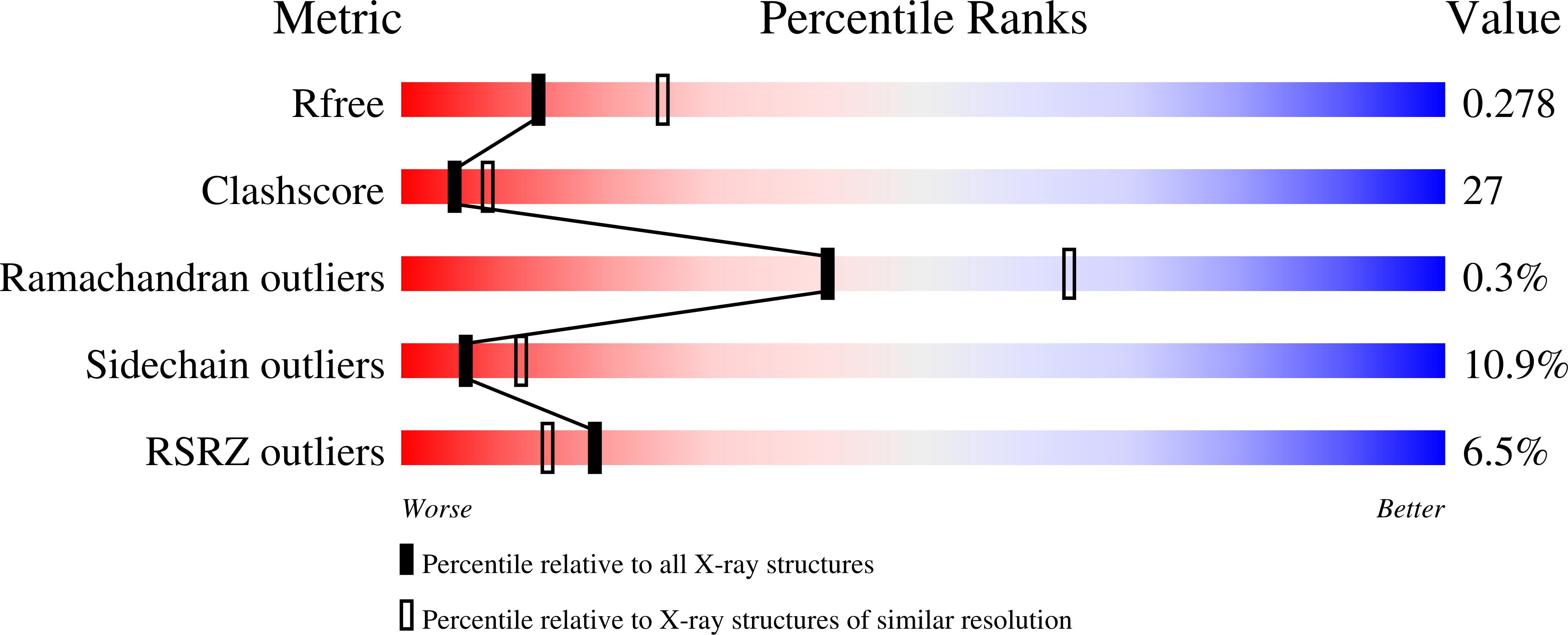Crystal Structures of BchU, a Methyltransferase Involved in Bacteriochlorophyll c Biosynthesis, and its Complex with S-adenosylhomocysteine: Implications for Reaction Mechanism.
Wada, K., Yamaguchi, H., Harada, J., Niimi, K., Osumi, S., Saga, Y., Oh-Oka, H., Tamiaki, H., Fukuyama, K.(2006) J Mol Biology 360: 839-849
- PubMed: 16797589
- DOI: https://doi.org/10.1016/j.jmb.2006.05.057
- Primary Citation of Related Structures:
1X19, 1X1A, 1X1B, 1X1C, 1X1D - PubMed Abstract:
BchU plays a role in bacteriochlorophyll c biosynthesis by catalyzing methylation at the C-20 position of cyclic tetrapyrrole chlorin using S-adenosylmethionine (SAM) as a methyl source. This methylation causes red-shifts of the electronic absorption spectrum of the light-harvesting pigment, allowing green photosynthetic bacteria to adapt to low-light environments. We have determined the crystal structures of BchU and its complex with S-adenosylhomocysteine (SAH). BchU forms a dimer and each subunit consists of two domains, an N-terminal domain and a C-terminal domain. Dimerization occurs through interactions between the N-terminal domains and the residues responsible for the catalytic reaction are in the C-terminal domain. The binding site of SAH is located in a large cavity between the two domains, where SAH is specifically recognized by many hydrogen bonds and a salt-bridge. The electron density map of BchU in complex with an analog of bacteriochlorophyll c located its central metal near the SAH-binding site, but the tetrapyrrole ring was invisible, suggesting that binding of the ring to BchU is loose and/or occupancy of the ring is low. It is likely that His290 acts as a ligand for the central metal of the substrate. The orientation of the substrate was predicted by simulation, and allows us to propose a mechanism for the BchU directed methylation: the strictly conserved Tyr246 residue acts catalytically in the direct transfer of the methyl group from SAM to the substrate through an S(N)2-like mechanism.
Organizational Affiliation:
Department of Biological Sciences, Graduate School of Science, Osaka University, Toyonaka, Osaka 560-0043, Japan.






















